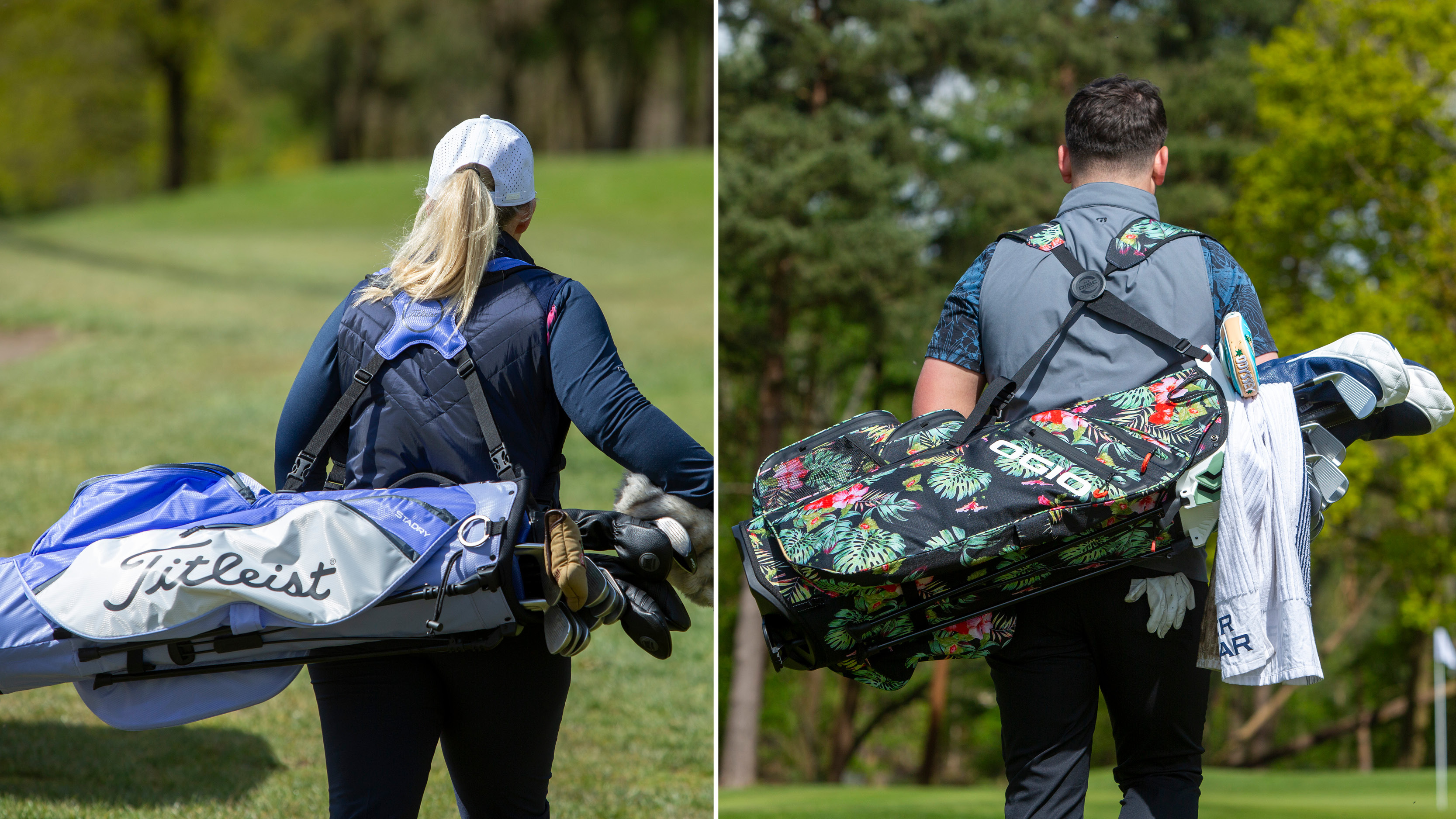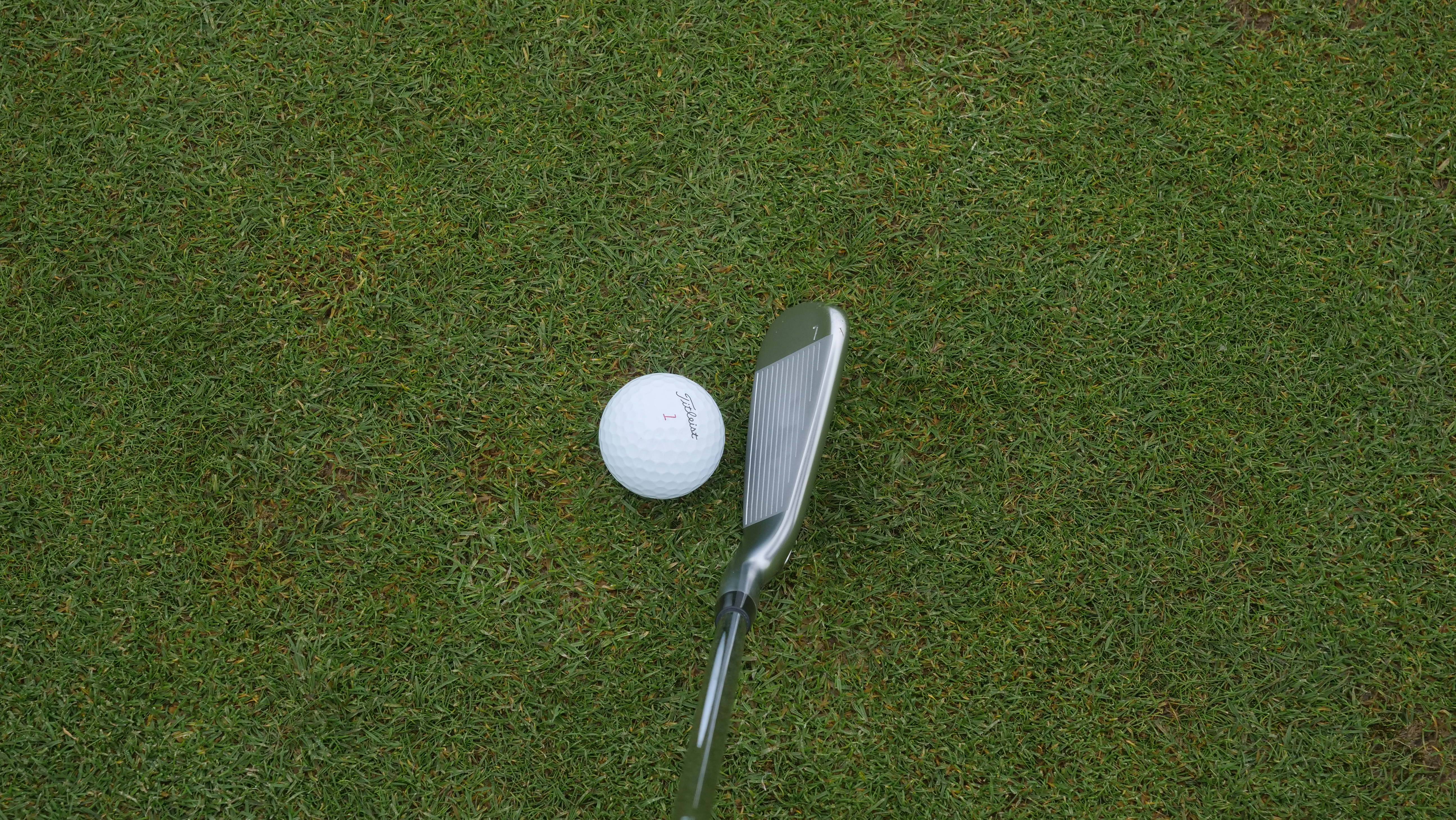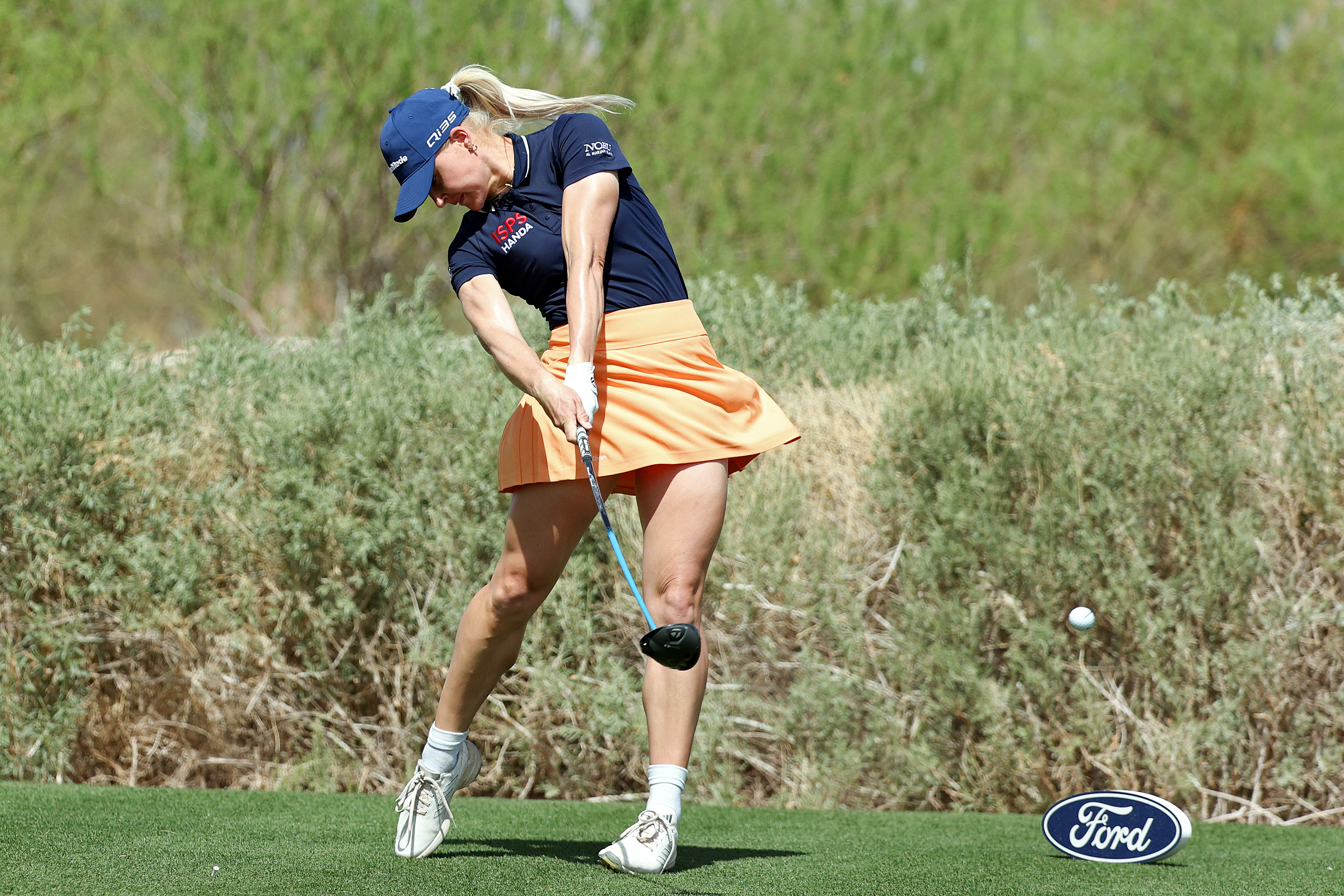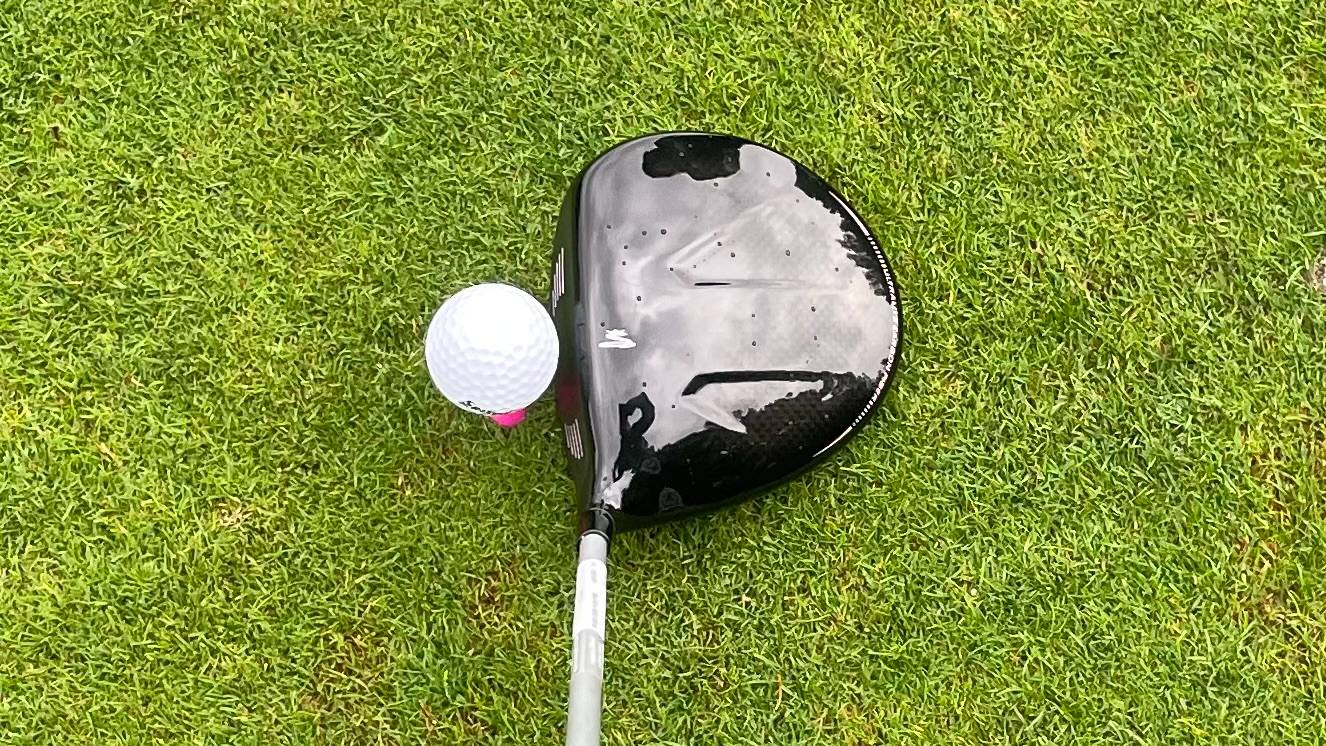What’s The Difference Between Men’s And Women’s Golf Clubs?
We take an in-depth look at the elements that make men’s and women’s golf clubs different and explain why they are designed this way


There’s a common misconception that golf clubs that are labelled "women’s" should suit all females. They don't.
I’ve been playing men’s clubs since I was a teenager, and I realised at a young age that the whippier shaft in a ladies flex was causing my tee shots to balloon too high and fly off-line.
The firmer flex of a men’s driver straightened me out and sent my tee shots off a lower, more penetrating trajectory, resulting in more length.
Fast forward 20 years and I’m surprised that men’s and women’s clubs even still exist.
Given the advancements in custom-fitting, the knowledge we now have, the fact is that no two women are alike and a set of clubs stamped "women’s" will only be suitable for a broad cross-section of the demographic.
Yet when you walk into any pro shop there’s still a clear-cut section for women’s and men’s golf clubs.
The women’s clubs stand out for their softer sheen and brighter colors. But aesthetics aside, what actually makes them different?
Subscribe to the Golf Monthly newsletter to stay up to date with all the latest tour news, equipment news, reviews, head-to-heads and buyer’s guides from our team of experienced experts.
When you pick up a woman’s golf club, it instantly feels much lighter to swing than a men’s with a smaller sized grip and much more loft to accommodate a slower swing speed.
But it’s the hidden design elements you can’t see that actually play the bigger role in helping women play better golf, things like technology inside the clubheads and nano-engineering in shafts to make them stronger yet lighter.
There are a few key differences between standardized shop-sold men’s and women’s clubs that are designed and built for Mr and Mrs Average, the stereotypical male and female.
Length
Clubs are built based on average heights, for men that’s 5’9″ tall and for women, 5’7” tall. Since there is a height difference, women’s clubs are generally about ¾ to one inch shorter than men’s.
If you are shorter than 5’7”, a standard women’s length club will still work ok. As men are typically taller and stronger than women, with longer levers, men’s clubs are more upright and heavier than women’s.
So what happens if an average woman tries to play men’s clubs? For starters they will feel heavy! They will also dramatically reduce your ability to create clubhead speed, robbing ball speed and distance.
Not Mrs Average? Petite women that are below 5’3″will suit a shorter option shaft (usually around one inch shorter than standard). Likewise, taller women (5’9″ and above) will suit men’s standard-length golf clubs or a senior flex men’s length shaft instead.
Lie Angle
As mentioned, because men are taller than women they need clubs with a more upright lie angle. For every half inch longer it’s going to play one degree more upright.
So, if you’re an average height woman using men’s clubs then they are probably too upright for you. This could cause you to pick the club up too steeply in the backswing without enough rotation and also swing down too steeply with a "chopping style" action.
More often than not, also on an across-the-line, out-to-in swing path, this causes a cut/slice and a loss of distance. Women’s clubs have a flatter lie angle to allow for our shorter height.

The lie angle of men's clubs is more upright as generally men are taller so need longer clubs
Weight
Women’s clubs are made lighter than men’s due to the difference in our strength. The shaft is lighter, the grip is lighter, and often the clubhead is made from a lighter material. This all adds up to the total weight being considerably less.
Even if you’re a physically fit and strong woman, that strength doesn’t automatically mean you will suit a heavier club. What you need is a club that is still light but has a stiffer flex, perhaps regular flex, or maybe a senior flex.
To generate a lighter weight, most women’s clubs are fitted with graphite shafts, as it helps lower the overall weight of the club, boosting swing speed and distance.
A lot of men’s clubs are now too, although steel is still popular among better players for the consistency and improved feel it brings.
If you are a better female player with a faster swing speed, then custom steel men’s options can be put into a women’s length iron. Choosing lightweight steel with a lower launch in the men’s clubs can help your game.

Tour player Charley Hull can generate clubhead speeds comparable to male professionals
Shaft Kick Point
As well as shaft flex, the other important factor is the kick point of the shaft. This is the area of a shaft that will bend most during the swing.
A low kick point is toward the head; a high kick point is toward the grip; and a mid kick point is near the center of the shaft. Kick point will influence how the club feels and what trajectory the ball launches at.
Women’s clubs tend to favor a low kick point to encourage more height on shots. Standard women’s clubs are sold fitted with L-Flex shafts that are light, around 40 grams typically.
The flexibility you need will be directly related to your swing speed and strength.
Loft
Women’s clubs tend to be designed with more loft (particularly woods and especially the driver) because we have a lower clubhead speed and struggle to impart enough power into the ball to launch it on a high enough trajectory to gain distance.
The average men’s driver comes with a standard loft from 9°-10.5°. For a typical standard women’s driver, it's more like 12°.
The same rule applies to irons. A typical men’s set of game improvement irons will have a 7-iron with a loft of around 28.5°.
The women’s equivalent 7-iron has a loft of 32.5°. The extra loft helps get the ball higher in the air and encourages it to fly a bit further.

The average men’s driver comes with a standard loft of 9°-10.5°, whereas for women it's 12°
Grip
As women’s hands are generally smaller than men’s, so are the golf grips fitted to our clubs. The correct grip size allows the hands to be in the correct position and transfer the right amount of grip pressure through impact to the hit.
Most men play with a standard to midsize grip on their clubs, whereas women’s golf grips are considerably thinner.
If you have small hands and are playing with grips that are too thick it can make it harder to maintain consistent grip pressure; it will also be harder to release the club at impact, leading to a distance and accuracy robbing slice shot.
If you find yourself somewhere in the middle of women’s and men’s grips, adding a few layers of tape underneath a women’s golf grip will build the grip up just slightly, without taking it entirely up to a men’s standard grip.
Summary
In summary, the differences between men’s and women’s golf clubs is significant due to our differing strength and size.
Typically speaking, men are taller and stronger than women. On that basis, standard women’s clubs are typically built about one inch shorter and lighter than men’s, with a softer flex shaft.
Women’s grips are also smaller and thinner than men’s grips.

Carly Frost is one of the golf industry’s best-known female writers, having worked for golf magazines for over 20 years. As a consistent three-handicapper who plays competitive club golf at Parkstone and the Isle of Purbeck courses in Dorset every week, Carly is well-versed in what lady golfers love. Her passion for golf and skill at writing combine to give her an unbeatable insight into the ladies game.
Carly’s role at Golf Monthly is to help deliver thorough and accurate ladies equipment reviews, buying advice and comparisons to help you find exactly what you are looking for. So whether it’s the latest driver, set of irons, golf ball, pair of shoes or even an outfit, Carly will help you decide what to buy. Over the years she has been fortunate to play some of the greatest courses in the world, ranking Sea Island, Georgia, USA, among her favourite golf resorts. Carly's aptly-named son Hogan is already hitting the ball as far as mum and will undoubtedly be a name to watch out for in the future.
Carly is a keen competitor and her list of golfing achievements are vast. She is a former winner of the South West of England Ladies Intermediate Championship, a three-time winner of the European Media Masters and she once beat an entire start-sheet of men to the title of Times Corporate World Golf Champion. She has played for both the Dorset and Surrey County Ladies first teams and is known for her excellent track record at matchplay.
Carly holds the ladies course record (68) at her home club Parkstone and her lowest competition round (seven-under-par 65) was carded in the pro-am of the Irish Ladies Open at Killeen Castle, playing alongside Solheim Cup superstar Anna Nordqvist. Although her current handicap index has crept up to 3.7 since Covid she has her sights firmly set on achieving that elusive scratch handicap and hopefully playing for her country when she’s 50.
Carly’s current What's In The Bag?
Driver: Callaway Epic Max, 10.5°
Fairway wood: TaylorMade SIM2, 15°
Hybrids: Titleist TS2, 19°, 21°, 24°
Irons: Mizuno JPX900, 5-PW
Wedges: Cleveland RTX, 52°, 56° and 58°
Putter: Scotty Cameron Futura X5
Ball: 2021 Callaway Ladies SuperSoft
You must confirm your public display name before commenting
Please logout and then login again, you will then be prompted to enter your display name.